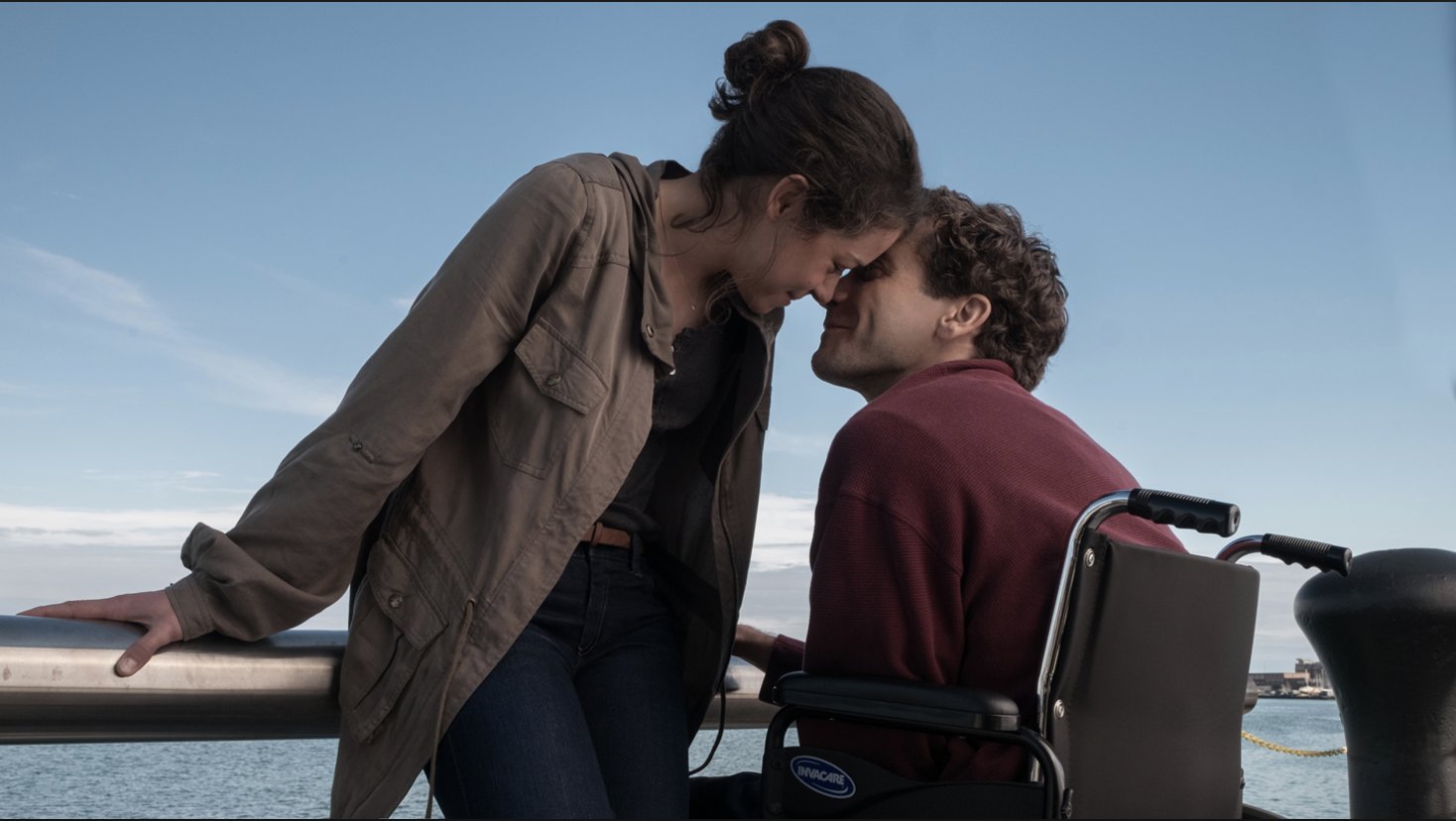I’m kind of fed up with traumatic recovery movies. Hard-knock tales about the resilience of the human spirit, I mean. Protagonists walloped and nearly destroyed by some godawful tragedy only to gradually fight their way back to a semblance of a normal life.
And so I sat down to watch David Gordon Green and Jake Gyllenhaal‘s Stronger (Roadside, 9.22) with a guarded attitude. Here we fucking go again, I told myself — the story of real-life Boston bombing victim Jeff Bauman (played by Gyllenhaal) overcoming the loss of his legs and becoming a hero of perseverance. This is certainly what’s been sold by the trailer, which is full of rah-rah uplift.
Well, guess what? Stronger includes a few inspirational moments in the third act, but mostly it’s a darker, grimmer and more despairing thing than you might expect. It’s been shot and cut in an intimate, off-angled way, and it certainly doesn’t unfold in the usual manner, at least in terms of rousing third-act recovery music and scenes designed to tug at your heartstrings. And Gyllenhaal, it must be said, really drills into Bauman’s pain, shock and despair, and I mean in a Robert De Niro-as-Jake LaMotta sort of way.
Is this Gyllenhaal’s most award-worthy performance ever? That’s a tough call for a guy who’s slammed it out of the park four or five times over the last dozen years (Brokeback Mountain, Zodiac, Nightcrawler, Demolition, Nocturnal Animals) but I honestly think it might be.
Augmented by some first-rate CG that totally convinces you that his legs are truly absent, Gyllenhaal’s Bauman is certainly more intense and blistering than Gary Oldman‘s Winston Churchill, I can tell you that. And I really admire that he never seems to be trying to charm the audience into liking him. That’s partly an aspect of John Pollono‘s script, which is based on “Stronger,” a personal recollection book by Bauman and Bret Witter, but it also comes from Gyllenhaal’s bravery.
The overall emphasis is a lot more on “fuck me” and “this really sucks” than “I not only have the strength to improve my life and make things better all around, but I will make you, the popcorn-munching audience member, feel better about your own life in the bargain.”
Tatiana Maslany earns respect and points as Erin Hurley, Bauman’s girlfriend who later became his wife.
Maslany is not…how can I put this?…she’s not exactly my idea of an actress I’d like to hang with for long periods of time or, you know, have a couple of drinks with or whatever, and she’s certainly not the birds-of-a-feather equal of Gyllenhaal in terms of basic attractiveness, but she knows how to make difficult situations and emotions play in relatable dramatic terms. (Last February’s announcement that Bauman and Hurley intend to divorce is ignored by the film.)
The degree to which Stronger is not a formula recovery flick can’t be over-emphasized. The trailer makes it seem like an uplift thing but the trailer lies.
I can’t honestly say that I enjoyed sitting through all of Stronger. I didn’t care for the company of Bauman’s friends and family, all of whom struck me as actors doing their utmost to act like working-class Baahstonians from central casting — beer, cigarettes, coarse attitudes, donkey faces, beefy bodies, watching Sox games from bar stools. An awful lot of behavior in this film is about the effects of too much beer or booze or too little education. Miranda Richardson‘s performance as Patty Bauman, Bauman’s alcoholic mother, is a strong offender in this regard. Fat, bloated, puffy — what a wreck.
Truth be told, Bauman spends a good 75% of the film in a state of shock and surly bitterness — more interested in getting bombed and feeling sorry for himself than manning up and climbing out of the hole. But he gradually gets there, and it all happens during the last…what, 20 or 25 minutes? It’s these last 25, which I’m not going to describe, that make Stronger worth the price of admission.
I especially admire Green’s strong reluctance to present Bauman as a traditional hero figure. You can fully understand why he’s angry and despairing and drinking a lot and self-destructing, and why the idea of having a child totally throws him. And you can also sympathize with a guy who’s been pigeonholed by the media and the public as a shining symbol of recovery from tragedy, and how resentful and burdened he feels about this.
By the end of Stronger you feel good that Green and Gyllenhaal haven’t put you through the usual paces. You may not feel “entertained” all the way through, but you can’t help but respect how they’ve assembled the story and kept things real.
From “Breathe, Stronger, Other Sagas of Brave Sufferers,” posted on 7.2.17:
“Spiritual uplift dramas about average folks slammed by tragedy and misfortune but refusing to accept a grim fate or a curtailed lifespan have, of course, constituted a dramatic genre for the last three decades. Life threw a curve or buried them in suffering but they wouldn’t buckle. Spirit, perseverance, grit. The support of families, wives, co-workers, etc.
“Andy Serkis‘s Breathe and Stronger are kin of all kinds of films in this realm. Ben Lewin‘s The Sessions, in which the life of polio victim John Hawkes was spiritually opened up by Helen Hunt‘s sex surrogate, is similar to Breathe as they both deal with guys paralyzed from the neck down. The total paralysis enveloping Mathieu Amalric in Julian Schnabel‘s The Diving Bell and the Butterfly (’07) is even more extreme.
“Expand the pain parameters and you could include The King’s Speech (royal stuttering), all kinds of concentration camp dramas (Angelina Jolie‘s relatively recent Unbroken, Robert Young‘s Triumph of the Spirit, Joseph Sargent and Arthur Miller‘s Playing For Time), Jim Sheridan and Daniel Day Lewis‘s My Left Foot (a seminal physical-malady film, released in ’89), innumerable disease-of-the-week TV dramas from the ’80s, etc.
“You could source these films all the way back to Dore Schary‘s Sunrise at Campobello (FDR refusing to submit to the ravages of polio) and even Harold Russell‘s struggle to adapt to civilian society in The Best Years of Our Lives. We all know the drill going in.”

